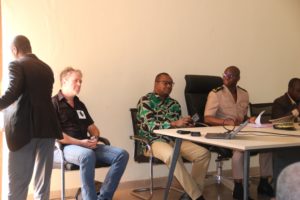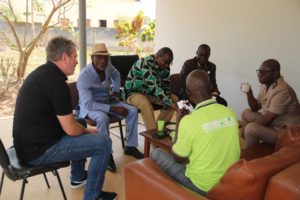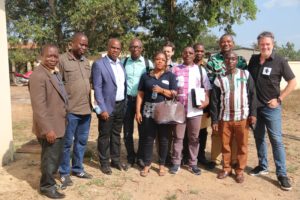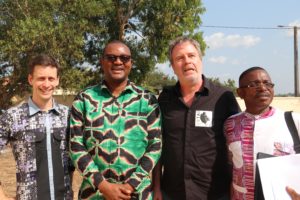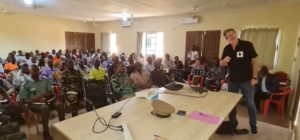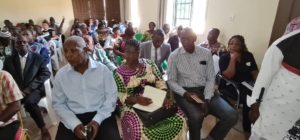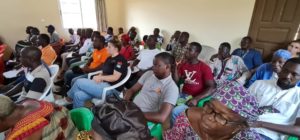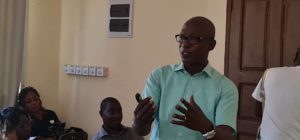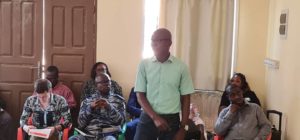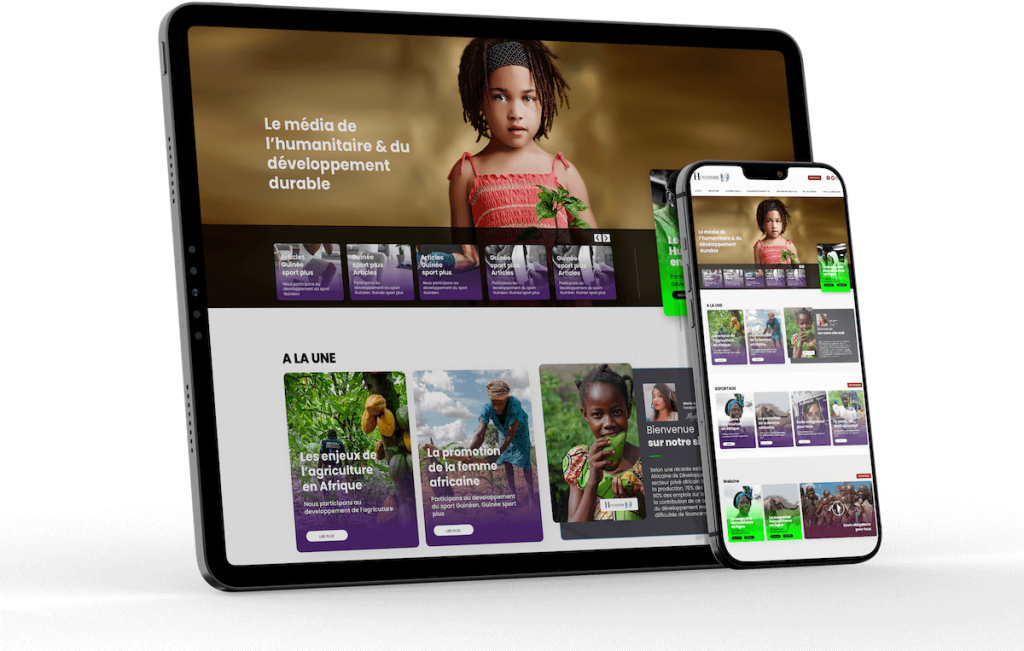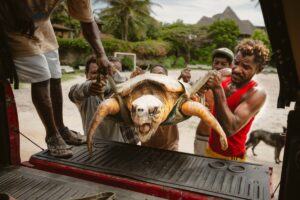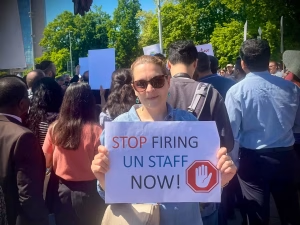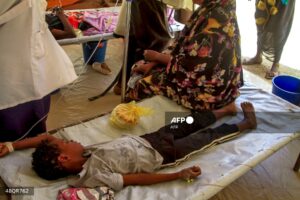On Tuesday 31 January 2023, a workshop was held at the Taï prefecture to review the 44 years of research of the Taï Chimpanzee Project (TCP) and the Taï Monkey Project (TMP) in the Taï National Park.
The workshop was organised by the TCP Director, Dr. Roman Wittig, with privileged partners, namely the Office Ivoirien des Parcs et Réserves (OIPR), the Centre Suisse de Recherches Scientifiques en Côte d’Ivoire (CSRS), the Université Félix Houphouët Boigny l’Unité de Formation et de Recherche (UFR) Biosciences and the Centre de Recherche en Ecologie (CRE).
Several generations of CSRS researchers are products of collaboration with NTP managers and public universities.
The workshop aimed to inform local people about the results of research and interdisciplinary activities in the Park.
The Sub-Prefect of Taï, Mr. Klanon Dagnogo, the mayor and the customary authorities and the population were present.
Dr. Wittig presented the results on the different behaviours of the great apes, their communication system, the dynamics within the groups, their feeding and social behaviour and their health. He emphasised the importance of chimpanzee studies in understanding human behaviour, given the many similarities between humans and chimpanzees.
Professor Bitty Anderson, Head of the Taï Monkey Project (TMP) and Dr Zoro Gone Bi gave 2 presentations respectively on the theme of Research and conservation of biodiversity of the Swiss Centre and Food ecology and medicinal plants.
The Wild Chimpanzee Foundation (WCF) addressed the theme of ecotourism and conservation. The CHU of Bouaké, present in Taï through the Andémia project, presented the theme of zoonosis and human health.
During the question and answer session moderated by Dr. Mathieu Cantat, TCP project manager, the interventions focused on the benefits that the populations living near the park derive from their proximity to this ecological jewel, the focus of attention of so many researchers (botanists, primatologists, epidemiologists, etc.) from all over the world.
The enthusiasm of everyone around this workshop was a sign of the commitment to continue to protect the Taï National Park through this participatory approach.
Located in the south-west of Côte d’Ivoire, the Taï National Park, with a total area of about 5,360 km², including the N’zo Partial Wildlife Reserve, represents more than 50% of the total area of West African forest under strict protection status. Due to its large size and exceptional heritage value, this park constitutes an immense genetic reservoir.
The NTP is managed by the South West Zone Directorate (DZSO) of the OIPR.)
Administratively, it covers three regions (Cavally, Nawa and San Pedro), six departments (Guiglo, Taï, Buyo, Méagui, San Pedro and Tabou) and 11 sub-prefectures (Guiglo, Nizahon, Taï, Zagné, Buyo, Dapéoua, Oupoyo, Gnamangui, Doba, Dogbo and Djouroutou) for a total area of 16,882 km².
This green treasure coveted by researchers, environmentalists, explorers and nature-loving tourists from all over the world has been the site of long-term scientific studies for over 40 years. Active since 1979, TCP students and collaborators have studied five neighbouring chimpanzee communities as well as a group of mangabeys. The research site covers about 250 km² and is located north and east of the Tai Ecology Research Station.
The permanent presence of the research staff and the excellent cooperation with the Office Ivoirien des Parcs et Réserves have contributed to making the research area the area with the highest density of primates in the Taï National Park.
The Taï Chimpanzee Project (TCP) is a long-term research project on the “Behavioural ecology of chimpanzees (Pan troglodytes verus) in Taï National Park and their implications for human evolution” and aims to observe the behaviour of chimpanzees and other primates in Taï National Park, monitor their health and hormone levels and protect them and their habitat. Chimpanzees are one of the closest species to humans (Langergraber et al., 2012).
Despite some discoveries made through the study of fossils, there is almost no knowledge about their behaviour, as this cannot be deduced from fossils. Yet behaviour is one of the most important adaptive mechanisms for responding to selective pressures in the environment.
Animals compete for limited resources, be it a food source, a breeding partner, habitat or shelter.
Individuals compete with other group members, but groups also compete with other groups.
They use behavioural strategies that reduce this competition. Knowledge of chimpanzee behaviour would help us to better understand our own behaviour as we might recognise the selective pressures that have shaped our actions.
The Tai chimpanzees are particularly important in solving this puzzle, as they have
enigma, as they have many characteristics similar to humans:
(1) tai chimpanzees use many tools, cracking different nuts using the hammer and anvil principle (Boesch & Boesch, 1982; Sirianni, Mundry, & Boesch, 2015) ;
(2) they cooperate at the group level during colobus hunts in trees, or to defend their territory against other communities (Boesch, 1994; Samuni, Preis, Deschner, Crockford, & Wittig, 2018; Samuni et al., 2017);
(3) they share food with related or unrelated individuals in their community (Samuni L. et al., 2018; Wittig, Crockford, Deschner, et al., 2014);
(4) they resolve conflicts and help others to reconcile (Preis et al., 2018; Wittig & Boesch, 2005, 2010);
(5) they adopt orphans and help them survive (Boesch, Bole, Eckhardt, & Boesch, 2010); and (6) chimpanzees show different cultures, even in neighbouring communities (Boesch et al., 2006, Luncz, Mundry, & Boesch, 2012; Luncz, Wittig, & Boesch, 2015).
In order to examine the extraordinary behaviour of the chimpanzees of Tai, the TCP is conducting a long-term research programme to study various dimensions of the biology of chimpanzees and a sympatric ape species (smoky cercocedons) for out-group phylogenetic comparisons.
Sustainability of the project is necessary, as chimpanzees are a long-lived species with an extremely slow life history. Wild chimpanzees are weaned at the age of five. They reach sexual maturity at the age of 10 to 15 years and have a life expectancy of up to 50 years. Therefore, the first chimpanzees born in the Tai population under observation have not yet reached their potential longevity, although they have been studied for 40 years. Furthermore, as habituation of wild chimpanzee communities to the presence of human observers takes between 5 and 10 years, this process requires a long-term investment.
In 2019, the project organised a symposium in Germany to mark its 40 years of existence. This resulted in the publication of a book about the 40 years of research in Tai National Park.
It should be noted that every 10 years, the Swiss Centre for Scientific Research in Côte d’Ivoire (CSRS) and the Ivorian Office of Parks and Reserves (OIPR), together with other partners, initiate a workshop to review and orientate scientific research activities in and around the Taï National Park (TNP), in order to update information and define new perspectives for the sustainable and inclusive management of this park. The third edition of this workshop was held in Cocody, on Thursday 21 and Friday 22 April 2022.
Progress has been made over the years, allowing us to know a little more about the value of this site and about little known species and ecosystems. For example, of the 263 plant species consumed by chimpanzees, about 100 are used by humans to treat 51 diseases.
While the TCP is a research project on chimpanzees that has been in place since 1979, the TMP, which concerns tailed monkeys, has existed in Côte d’Ivoire since 1991.
So far, the State of Côte d’Ivoire, through the OIPR, the various national and international partners concerned with preserving this treasure, has succeeded in its mission as much as possible. The Taï National Park (TNP) is, in fact, one of the last important remnants of the primary tropical forest in West Africa.
Its rich natural flora and endangered mammal species, such as the pygmy hippopotamus and more than a dozen species of monkeys, are of great scientific interest.
This lush forest, with its huge trees, undergrowth and natural water reservoirs, still holds many unexplored treasures.
The different research areas of the TCP are
(1) Behavioural ecology of chimpanzees and mangabeys and the endocrinological correlations
endocrinological correlates of behaviour
Dynamics within and between groups:
Pro-social behaviour :
Feeding behaviour
(2) Comparative social cognition
(3) Communication systems
(4) Sociability and health
(5) Monitoring the health of primates at the NPT
(6) Neural bases of behaviour
(7) Spatio-temporal monitoring of plant production consumed by chimpanzees in their different territories
